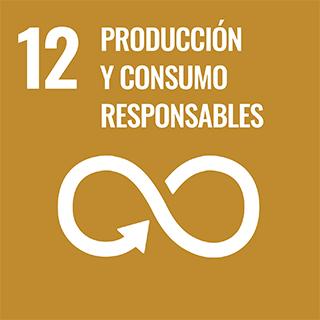
Indexat a
Llicència i ús
Citacions
Impacte en els Objectius de Desenvolupament Sostenible (ODS)

Anàlisi d'autories institucional
Del Cañizo C.Autor o coautorFuertes Marrón D.Autor o coautorDasilva Villanueva N.Autor o coautorCaballero L.j.Autor o coautorProduction of upgraded metallurgical-grade silicon for a low-cost, high-efficiency, and reliable PV technology
Publicat a:Frontiers In Photonics. 5 - 2024-01-01 5(), DOI: 10.3389/fphot.2024.1331030
Autors: Míguez Novoa JM; Hoffmann V; Forniés E; Mendez L; Tojeiro M; Ruiz F; Funes M; del Cañizo C; Fuertes Marrón D; Dasilva Villanueva N; Caballero LJ; Arıkan B; Turan R; Canar HH; Sánchez Plaza G
Afiliacions
Resum
Upgraded metallurgical-grade silicon (UMG-Si) has the potential to reduce the cost of photovoltaic (PV) technology and improve its environmental profile. In this contribution, we summarize the extensive work made in the research and development of UMG technology for PV, which has led to the demonstration of UMG-Si as a competitive alternative to polysilicon for the production of high-efficiency multicrystalline solar cells and modules. The tailoring of the processing steps along the complete Ferrosolar’s UMG-Si manufacturing value chain is addressed, commencing with the purification stage that results in a moderately compensated material due to the presence of phosphorous and boron. Gallium is added as a dopant at the crystallization stage to obtain a uniform resistivity profile of ∼1 Ω cm along the ingot height. Defect engineering techniques based on phosphorus diffusion gettering are optimized to improve the bulk electronic quality of UMG-Si wafers. Black silicon texturing, compatible with subsequent gettering and surface passivation, is successfully implemented. Industrial-type aluminum back surface field (Al-BSF) and passivated emitter and rear cell (PERC) solar cells are fabricated, achieving cell efficiencies in the range of those obtained with conventional polysilicon substrates. TOPCon solar cell processing key steps are also tested to further evaluate the potential of the material in advanced device architectures beyond the PERC. Degradation mechanisms related to light exposure and operation temperature are shown to be insignificant in UMG PERC solar cells when a regeneration step is implemented, and PV modules with several years of outdoor operation demonstrated similar performance to reference ones based on poly-Si. Life cycle analysis (LCA) is carried out to evaluate the environmental impact of UMG-based PV technology when compared to poly-Si-based technology, considering different scenarios for both the manufacturing sites and the PV installations. Copyright © 2024 Míguez Novoa, Hoffmann, Forniés, Mendez, Tojeiro, Ruiz, Funes, del Cañizo, Fuertes Marrón, Dasilva Villanueva, Caballero, Arıkan, Turan, Canar and Sánchez Plaza.
Paraules clau
Indicis de qualitat
Impacte bibliomètric. Anàlisi de la contribució i canal de difusió
El treball ha estat publicat a la revista Frontiers In Photonics a causa de la seva progressió i el bon impacte que ha aconseguit en els últims anys, segons l'agència Scopus (SJR), s'ha convertit en una referència en el seu camp. A l'any de publicació del treball, 2024 encara no hi ha indicis calculats, però el 2023, es trobava a la posició , aconseguint així situar-se com a revista Q2 (Segundo Cuartil), en la categoria .
Impacte i visibilitat social
Anàlisi del lideratge dels autors institucionals
Aquest treball s'ha realitzat amb col·laboració internacional, concretament amb investigadors de: Turkey.